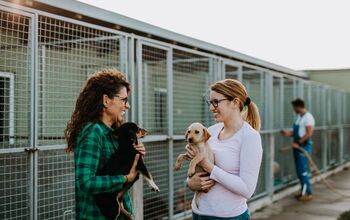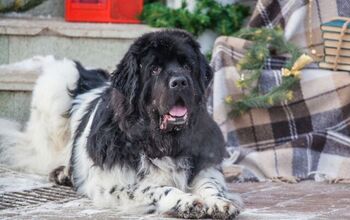Alaska Rabbit


About Alaska Rabbit
Even though you might think the Alaska Rabbit is from Alaska, the breed was actually developed using Champagne d’Argent, Dutch, Havana, and Himalayan rabbits in Germany. Max Gotha, a rabbit judge, created this breed with the help of a fellow rabbit breeder, in the hopes of mimicking the Alaskan Fox, which had been used in the fur trade of the 1900s. Their goal was to create a breed of rabbit that would showcase long white guard hairs on a black coat so that they could profit from the pelts.
Despite their plans, however, the Alaska Rabbit featured a coat that was intensely black, and the guard hairs were long and glossy black in color. But because of the beauty and uniqueness of the black, dense coat, they decided to keep this new breed as it was, rather than attempt to move the breeding in a different direction. Later, the Alaska Rabbit was used to develop the Black Rex Rabbit.
Alaska Rabbits were exhibited for the first time at a rabbit show in Europe in 1907. Once people saw these beautiful animals, the breed gained recognition quickly. Later, Gotha would end up taking the Alaska Rabbit into Canada and the United States, and they were recognized as a breed in the middle of the 1970s. However, the breed’s recognition within the United States was short-lived because the Black Havana Rabbit, which became popular in the 1980s, caused the Alaska Rabbit to be dropped from the American Rabbit Breeders Association (ARBA) registry. Breeders are still working on helping this breed make a comeback within the US.
This breed is recognized by the British Rabbit Council (BRC).
Alaska Rabbits are known for being good-tempered and docile animals.
Alaska Rabbits have balanced and well-rounded bodies, and even though they are not compact like other breeds, they do feature good bone development. They are often described as thickset, solid, and blocky. Males will be a bit heavier, while females will have features that are more feminine, and females will also showcase a dewlap.
The ears of the Alaska Rabbit should be short when compared to similar breeds. They will also be broad, rounded at the ends, and help upright.
The Alaska Rabbit’s short coat is one of its most distinguishing features because it is luxurious, soft, and dense.
An Alaska Rabbit will be solid colored, and the only color that these rabbits feature is black. If you look at the fur that is nearest to the skin, it will typically be deep slate blue in color, but it will turn into a jet black color towards the surface of the fur.
The pads of the rabbit’s feet, as well as the belly and nose, will often feature a matte black hue, while the sides and the top of this rabbit are colored vibrantly. Overall, the fur is considered lustrous and silky, and there is an obvious glossy sheen.
These rabbits also feature dark brown eyes and dark toenails. There might also be just a few white hairs scattered throughout the fur, but there shouldn’t be a high number of stray white hairs, white patches, or white spots.
An Alaska Rabbit will be solid black.
You can keep your Alaska Rabbit indoors or outside, but just be sure to provide him with a secure area where he will be able to get some sunshine while feeling safe. Even though your pet should have a place to sunbathe, he also needs a shaded spot to retreat to whenever he wants to. An outdoor hutch should be weatherproof and waterproof, and you can use sawdust as a substrate that can be cleaned easily.
If you are going to be keeping your rabbit indoors with other pets, introduce the animals to one another carefully, preferably while they are young. You should provide your rabbit with a place to rest undisturbed, such as a dog crate, and you should rabbit-proof your home so that he will not chew on anything that could be dangerous or important to you while he is outside of his cage.
Your Alaska Rabbit’s diet can consist of high quality pellets for rabbits, along with various hays and plenty of greens and vegetables. This will ensure he gets the nutrition he needs without gaining too much weight.
As with all other rabbit breeds, you can vaccinate your Alaska Rabbit to protect him against VHD (viral haemorrhagic disease) and myxomatosis, as these are conditions that could potentially be fatal. You can also treat your rabbit for worms, ticks, and fleas on a regular basis, especially if you will be allowing your pet to spend time outside.
Dental hygiene will also be important in order to prevent your rabbit’s teeth from becoming overgrown. Provide your pet with a diet that is high in fibrous green veggies, such as kale and cabbage, along with plenty of high quality hays. You can also provide gnaw toys designed to be safe for rabbits.
The fur of the Alaska Rabbit is lustrous and silky, with a glossy sheen.
Alaska Rabbits are known for being good-tempered and docile animals. They are not aggressive, and they have an outgoing personality that makes them a great option for a family who is seeking a pet rabbit. These animals are loving and gentle, and they will enjoy spending a lot of time with you. Plus, these pets are smart and litter trainable too.
Like other rabbits, you can expect that your Alaska Rabbit will typically be more active in the morning and at night. Your pet will need regular playtime sessions and will be energetic, so provide him with toys, but also be prepared to snuggle with him once he is tired and ready to relax.
It’s also important to note that this breed could be skittish, so it is not the best choice for families with young kids. Anyone who handles these rabbits should know how to do so with gentleness in order to prevent injuries.
Photo credit: Ailura/Wikipedia; Life on White/Bigstock; J. Stephen Conn/Flickr

Lisa Selvaggio is a freelance writer and editor, and our resident cats-pert, with certifications in pet nutrition and pet first aid. She enjoys producing content that helps people understand animals better so they can give their pets a safe and happy home.
More by Lisa Selvaggio

























